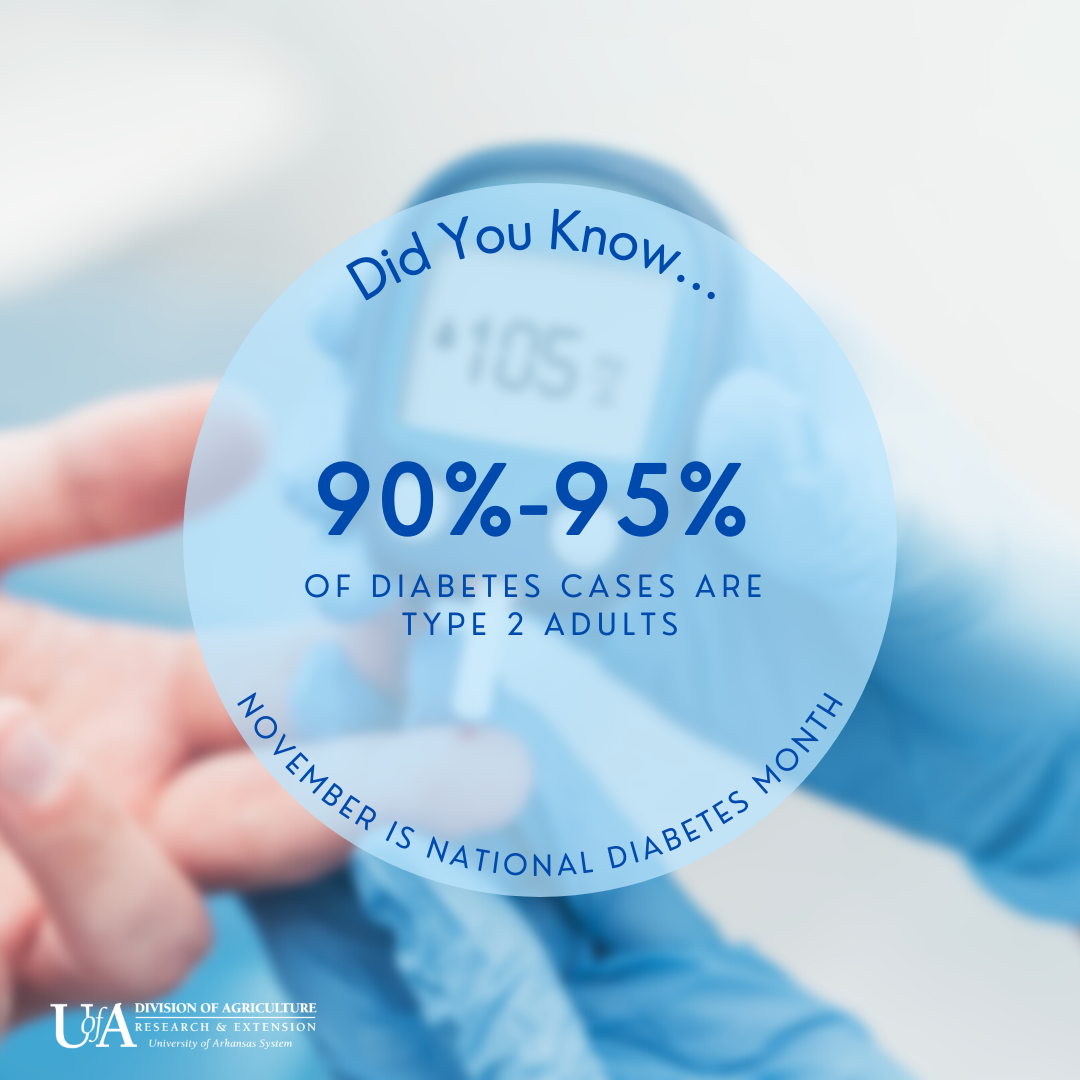November is National Diabetes Month: How to Get Active!
At Home with UAEX
Learn from the best Extension Educators on being at home with UAEX!
November is National Diabetes Month: How to Get Active!
by Original content by Heather Wingo | adapted for blog by Katie Cullum
We all hear about how physical activity is good and important to people living life with diabetes. The good news is, it’s not too hard to be more active!
What are the benefits of being physically active?

Being physically active while managing diabetes can make your body more sensitive to insulin (the hormone that allows cells in your body to use blood sugar for energy) to better help manage your diabetes. Physical activity is also helpful in controlling blood sugar levels and lowers the risk of heart disease and nerve damage. Other benefits include the following: maintaining a healthy weight, losing weight, feeling happier, sleeping better, improved memory, controlling blood pressure, lowering LDL (“bad”) cholesterol, and raising HDL (“good”) cholesterol.
How to get started being physically active
How much activity?
The goal is to get at least 150 minutes per week of moderate-intensity physical activity. One way to try and fit in at least 20 to 25 minutes of activity every day. It is also important to take 2 days or more a week to work on strengthening all major muscle groups (legs, hips, back, abdomen, chest, shoulders, and arms).
Ways to get started…
- Find something you like. Exercising by doing something you enjoy is important because if you don’t like it, you won’t stick with it. Find an activity that you and your health care providers agree you can do regularly for the best results.
- Start small. If you’re not already physically active you should begin slowly and work
your way up to the desired level. For example, you could park farther from the door,
take the stairs, do yard work, or walk the dog. Start small and gradually add a little
more time and intensity each week. For example:
- 30 minutes at one time five times a week
- 15 minutes at a time 10 times a week
- 10 minutes at a time several times a day
- Find a partner. It’s more fun when someone else is counting on you to show up. Having a partner may help you continue to be active.
- Pick a goal. An example of a goal could be to walk a mile every day for a month or to be active every weekday for 30 minutes. Be specific and realistic. Always discuss your activity goals with your healthcare provider.
- Schedule it in. The more regular activity you do, the quicker it will become a habit. Think of ways to link activity to daily life. For example, you could schedule walking with a co-worker after lunch. Try not to go more than 2 days in a row without being active.
Do it your way!
Examples of moderate-intensity physical activities include the following: walking briskly, doing housework, mowing the lawn, dancing, swimming, bicycling, or playing sports.
Consider even following a workout video or taking a class, spend time being physically active with a friend or family member. Chair Yoga is the perfect exercise for those looking to improve posture, increase flexibility, and improve balance while avoiding injury.
Get more activity inspiration!
I have diabetes, what are some considerations I should have?
Before starting any physical activity, check with your doctor to discuss the best physical activities for you. Be sure to share which activities you like, how to prepare, and what you should avoid.
Drink plenty of fluids while being physically active to prevent dehydration and make sure to check your blood sugar before being physically active. Wear cotton socks and athletic shoes that fit well and are comfortable to protect your feet while you exercise.
Be Safe…
· Check your blood sugar before you are physically active.
· Carry a snack with you in case your blood sugar goes too low.
· Carry identification that says you have diabetes.
· Wear shoes that fit well and are made for the kind of activity you do.
· Check your feet every day. Call your doctor if a cut, sore, blister, or bruise on your feet or toes does not go away after 2 days.
Prepare for the future
Ask your doctor or nurse the following questions:
1. What physical activities are safe for me?
2. Are there any special things I need to do to protect my feet?
3. Do I need to make any changes in my medicines before I raise my level of physical activity? Do I need to eat a snack before I’m active?
Plan ahead:
· One thing I will do to be more active before my next appointment:
· Review your notes from the doctor or nurse.
